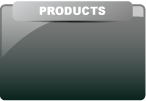The mobile app software company for medical image viewing, planning and fabrication.
Copyright © 2018 Conceptualiz Inc. All rights reserved.
FREQUENTLY ASKED QUESTIONS:
- How do I create the most accurate 3-D model?
For optimal 3-D model accuracy, resolution and performance
we recommend using standard soft tissue axial cuts at 0.5-1mm
slice thickness. Thicker cuts >1mm will result in a less precise
3-D model and thinner cuts <0.5mm will result in slower
performance.
- Can I use reformatted coronal and sagittal CT slices for 3-D modeling?
Yes you can, however, reformatted coronal and sagittal
reconstructions typically have larger slice thickness and will
result in a less accurate 3-D model. For best results we recommend
using axial cuts 0.5-1mm thickness and soft tissue windows. Axial
cuts provide the most accurate scan data.
- How do I improve a “stepped” looking model?
Larger slice thickness >1mm will result in a stepped looking model.
We recommend a slice thickness of 0.5-1mm for optimal model
resolution and accuracy.
- The tissue I want to 3-D model does not display on the screen after segmentation?
The table seen above titled “Tissue Densities in Hounsfield Units”
provides a guide when segmenting certain tissue thresholds using
soft tissue windows. Obtaining the perfect tissue threshold may
require a few segmentation trials to obtain the desired 3-D model.
If bony windows are used instead of the recommended soft tissue
windows then the typical Hounsfield unit thresholds may be less
than expected.
- I get an error message “Could not process files” during segmentation?
This means that the 3-D model size is exceeding the memory
restrictions placed on iOS applications. To overcome this problem
you can:
- Adjust the Hounsfield Unit threshold to a slightly higher
level so that less tissue is rendered.
- If you do not want to sacrifice tissue resolution you can
reduce your CT slice series volume size to focus in on
certain anatomical structures. This will result in a
thinner 3-D model but will provide the tissue accuracy
and resolution that you desire.
- After segmentation I get a lot of noise or artifact around the 3-D model?
There is a balance between accurately rendering desired tissue
thresholds and reducing model noise/artifact. When modeling
bone this is best optimised at +300 HU. You can reduce noise/
artifact by increasing the HU threshold level but this may affect
3-D model accuracy. If high accuracy models are required then we
recommend using your desired HU threshold and use the Selection
tool from the tool bar to highlight and delete unwanted structures/
noise/artifact.
- How do I import .DICOM, .stl or .obj files of anatomical models or import .stl files of implants?
This requires an in-app purchase to unlock this feature. Go to the
Settings button in the tool bar and tap on Purchases > Buy Features.
- For importing .DICOM, .stl or .obj files of anatomical
models see the section above titled “IMPORT DICOM
SCANS FROM DROPBOX FOR SEGMENTATION OF
3-D MODELS”.
- For importing .stl files of implants see the section above
titled “6. INDUSTRY IMPLANT LIBRARY”.
- How do import/export medical models or implants in .stl format to iTunes file sharing?
This requires an in-app purchase to unlock this feature. Go to the
Settings in the tool bar and tap on Purchases > Buy Features.
- See the section above titled “3. SELECTION &
MEDICAL MODELING TOOL - Exporting anatomical
models to iTunes sharing.
CONCEPTUALIZ
View, Plan & Fabricate Medical Imaging in 3D.





